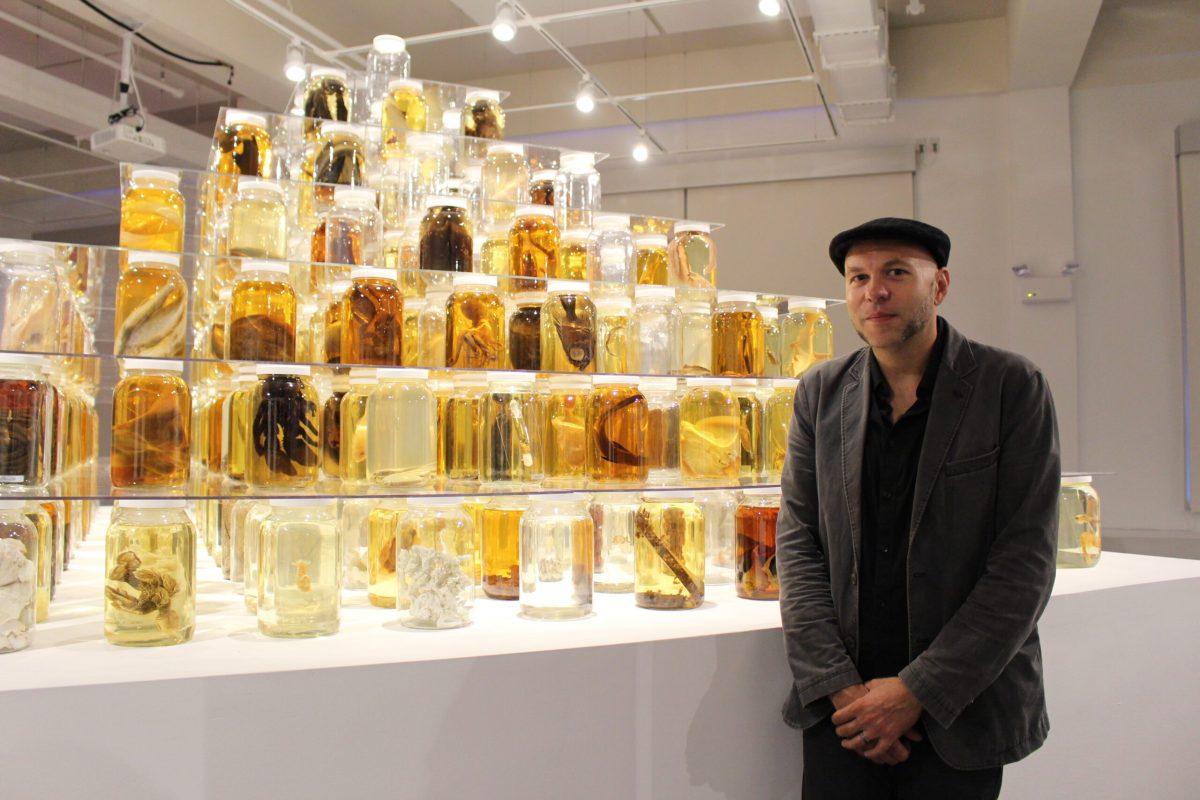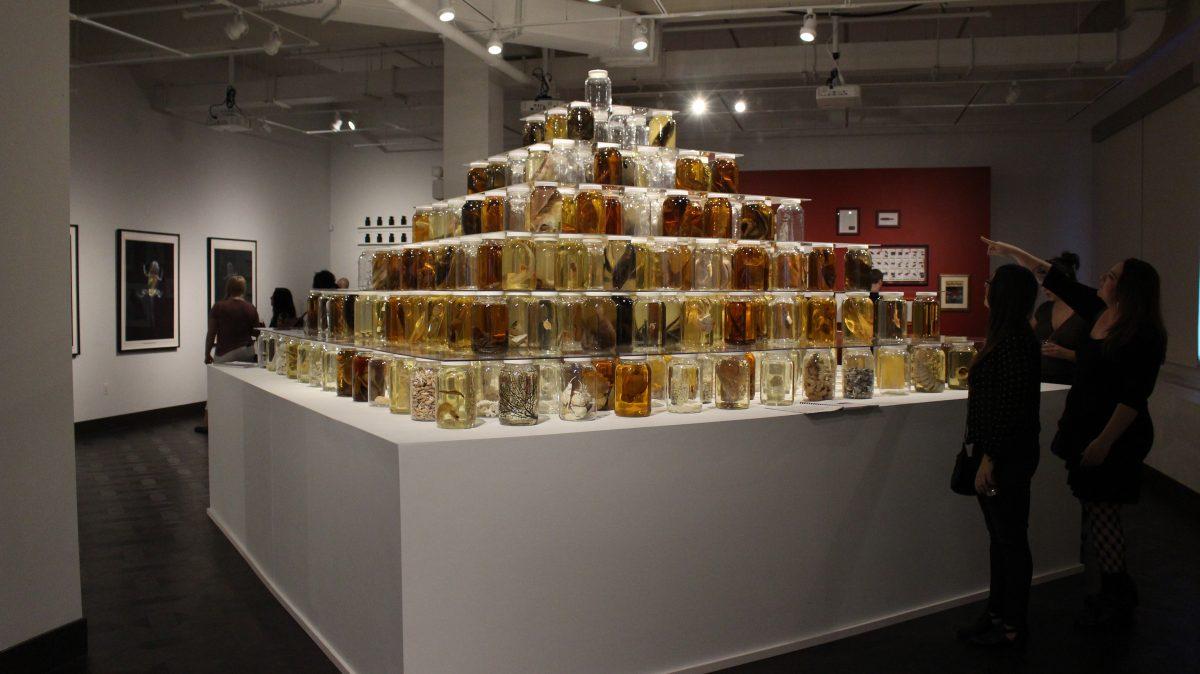Art and biology seldom commingle.
At the Rowan University Art Gallery, the two disciplines find common ground in the current installation of Brandon Ballengée’s “Sea of Vulnerability.”
A professional artist and biologist, Ballengée visited campus for a lecture and opening reception concerning his work currently on display.
“I’m really interested in the way you can utilize art and science to try to get people interested and inspired and engaged to learn more about the environments they find themselves in,” Ballengée explained.
This conception of “transdisciplinarity” emerged from the scientific community, but has since been embraced by the arts community.
“We’re realizing that disciplines combined can hopefully work together to tackle some of the huge issues that we face globally,” Ballengée said, pointing to climate change as one such issue.
Much of Ballengée’s research focuses on amphibians and their declining populations, illustrated prominently in his work “Malamp: Reliquaries.” In this piece, terminally deformed frogs are chemically altered through a process known as clearing and staining. Photographs of the specimens are then printed on watercolor paper, evoking the feel of a 19th century watercolor print with a subdued palette, as Ballengée described it.
“They’re printed a certain scale because I want people to not be afraid of them, or not just walk by them,” Ballengée said, referring to the large artistic rendering of the minuscule frogs. “I want them to feel like they’re walking up to a toddler, like you want to hold it.”
This approachability is an aim of Ballengée’s, with the goal being to guide spectators to become aware of what’s wrong with the subjects portrayed, hopefully inspiring reflection on ecosystems and what can be done to conserve them.
The centerpiece of the exhibit — “Collapse” — is a response to the 2010 British Petroleum oil spill in the Gulf of Mexico. The layered piece features several levels, ascending up toward the ceiling of the gallery. Each level consists of many jars, with each jar containing a variety of specimens.
According to Ballengée, around 26,000 specimens and 400 species are represented, equaling less than three percent of the known biodiversity in the Gulf of Mexico. The level on which a specimen is set corresponds to its trophic level and where it stands in the food chain.
Mary Salvante, gallery director and curator for programming at the Rowan University Art Gallery, gave an insider’s look at the process of installing a complex work like “Collapse.”
“With all of our shows, but particularly this show, there were a lot of challenges with getting it ready for presentation,” Salvante said. “For example, the very large platform that you see, we had to build on-site. I had a professional fabricator come in to build it, and then Brandon came so that he had to organize all the jars, since he knew what order they had to be in. To actually install it, we had to rent scaffolding with a catwalk. The installer had to go out to the center of the catwalk over the pedestal to place the jars one at a time. Then, we put plexiglass over one level and started again with the next tier, placing one at a time, and so on. It took us three days. It’s a slow process, but it paid off.”
“Collapse” aptly conveys the immense amount of life contained within oceanic ecosystems, generating reflection on the vast number of living creatures that can be affected because of oil spills and other human actions.
Senior fine arts major Matt Scalici echoed this notion.
“It’s really interesting to see how many animals got affected by the oil spill,” he said.
The eye-catching, room-dominating work achieves Ballengée’s goal of raising interest and awareness for the cause of natural conservation.
By taking familiar sights — frogs and specimens in a jar — and representing them in a nontraditional yet approachable fashion, Ballengée’s “Sea of Vulnerability” succeeds in combining art and biology for a transdisciplinary spectacle.
Ballengée’s installation is on display at the Rowan University Art Gallery at 301 High St. until Nov. 5.
For comments/questions about this story, email [email protected] or tweet @TheWhitOnline.

























































































































































!["Working with [Dr. Lynch] is always a learning experience for me. She is a treasure,” said Thomas. - Staff Writer / Kacie Scibilia](https://thewhitonline.com/wp-content/uploads/2025/04/choir-1-1200x694.jpg)










































